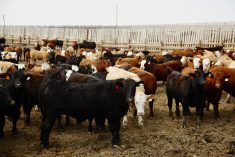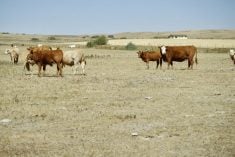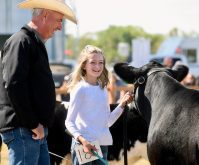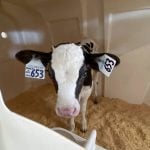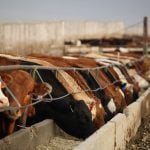Fed cattle
The fed cattle market has continued its contra-seasonal move through the third quarter. Typically, larger fed cattle numbers with more days on feed are met with consumers pulling back as fall schedules commence along with the additional expenses that accompanying all hit at once. The third quarter has seen larger carcass weights and lower wholesale prices; however, the market is ignoring that negativity, setting new annual highs each week.
Mid-September saw the fed steer price reach an annual high of $181.94/cwt, $23.93/ cwt higher than a year ago and the highest price since the spring of 2017. Given that it’s $39.89/cwt higher than the five-year average for the same week, it’s important to recognize the high break-evens of the front-end fed cattle supply currently being marketed. Based on Canfax data, these fed cattle are still selling at negative margins.
Read Also

Canadian Cattle Young Leaders, national Environmental Stewardship Award winner and more
Canadian beef industry news, including award winners and job changes.
The cash-to-cash basis is wide, -$12.86/cwt as of September 23, which is $13.86/cwt wider than the same week last year and $13.82/cwt wider than the five-year average. Climbing carcass weights and slaughter numbers mean more beef moving through the system over the next month. The mid-September steer carcass weight is 949 lbs., 10 lbs. larger than the same week in 2021. Steer slaughter to mid-September is 1,265,060, down one per cent. Heifer kill is up three per cent at 737,327 head. Fed exports including cows total 331,444 head, up 14 per cent.
The Alberta and Saskatchewan cattle-on-feed report calculated 811,771 head, 12 per cent fewer than last year. Last year saw a larger on-feed total in September due to early drought-placed calves. When compared to two years ago, the current on-feed total is five per cent larger. Placements in August were 49 per cent smaller than in August 2021, totalling just 89,813 head.
Deb’s outlook for fed cattle: It is hard to project the fed cash market’s near-term direction. Buyers are currently giving month-out lift dates, carcass weights are up and wholesale values are down. While the market continues to post new annual highs each week, indications point to a steady to softer market. However, demand seems to be telling a different story. Looking at the fed market further out, supplies are expected to tighten, and demand to improve as holiday months approach, supporting a stronger market. In addition, if the Canadian dollar continues a steady or downward trend, export demand will increase and further support the fed market.
Feeder cattle
Mid-September saw a significant jump in both feeder cattle prices and auction market volumes. Harvest has wrapped in many areas of the country and producers are focusing on bringing cows home and weaning calves. The start of the fall run has been strong, fuelled by lower barley prices, a strong futures market, tighter overall feeder supply, better fed-cattle margins and a weaker Canadian dollar. The calf market strengthened to a peak of $273.63/cwt the second week of September; September 23 reported an average of $272.61/cwt which is $47.50/cwt higher than the same week one year ago.
The 550-lb. calf market has increased by over $54/cwt since the start of 2022. Heavier steers coming off grass hit high at the start of September when the average price of 850- lb. steers was reported at $239.19/cwt. Since then, the price has dropped back less than $1/ cwt to hold an average over $238.50/cwt. The 850-lb. feeder steer average for September 23 is $42.61/cwt higher than last year.
The 850-lb. feeder basis remains wider than seasonally normal. This is the time of year the feeder basis is often positive; however, the current basis is still -$1.99/cwt, which is $5.24/cwt wider than the five-year average of $3.35/cwt. A wider basis generally supports increased export. As of September 10, feeder exports totalled 161,075 head which was one per cent ahead of 2021 at the same time. The first two weeks of September saw 45 per cent fewer exports than the same two weeks in 2021.
Deb’s outlook for feeder cattle: Lower grain prices and strong deferred live cattle futures have feeder calves starting to show a profit on paper. At the same time, supplies have tightened in North America due to an aggressive drought that reduced herds over the last couple of years. The 2022 fall run started with both finishing and background lots competing for all feeder cattle classes. Ample forage in many areas and potential risk management opportunities have increased buyer competition. Over the next few weeks, feeder cattle will increase at local auction houses. This will create pressure in the market but to what extent is unknown. Good-quality, larger groups of uniform calves will continue to bring premiums and the overall market will have good domestic as well as U.S. buyer support.
Non-fed cattle
After a very strong summer market, non-fed cattle prices have pulled back. Despite the seasonal price decrease, the year-over-year comparison is still positive. After the annual high was set in August at $115.58/cwt, the D1,2 cow average in mid-September was $101.59/cwt. When compared to a year ago, the D1,2 price is $21.42/cwt higher. Drought through the summer has increased cow marketings in the U.S. In Canada, cow slaughter to September 17 is two per cent ahead of the same time last year, at a total of 310, 603 head.
Bull prices have held in recent weeks, currently averaging $128.63/cwt. Slaughter bull exports to September 23 are up seven per cent at 28,138 head while the slaughter in Canada is down 19 per cent, totalling 10,084 head.
Deb’s outlook for non-fed cattle: Cow marketings will increase over the month as producers wean and cull. Cow prices will trend downward as they typically do through the fall run. Volume may not be as large as in recent years as more forage will encourage producers to keep feeder cows or sell to feeders, delaying slaughter until the new year. As well, many producers oversold a year ago in response to drought and low feed supplies, leaving fewer cows to market in 2022. Market supports will include the lower dollar and export potential. Expect slightly lower non-fed cattle prices over the next month before seasonal strength is seen towards the end of 2022.





